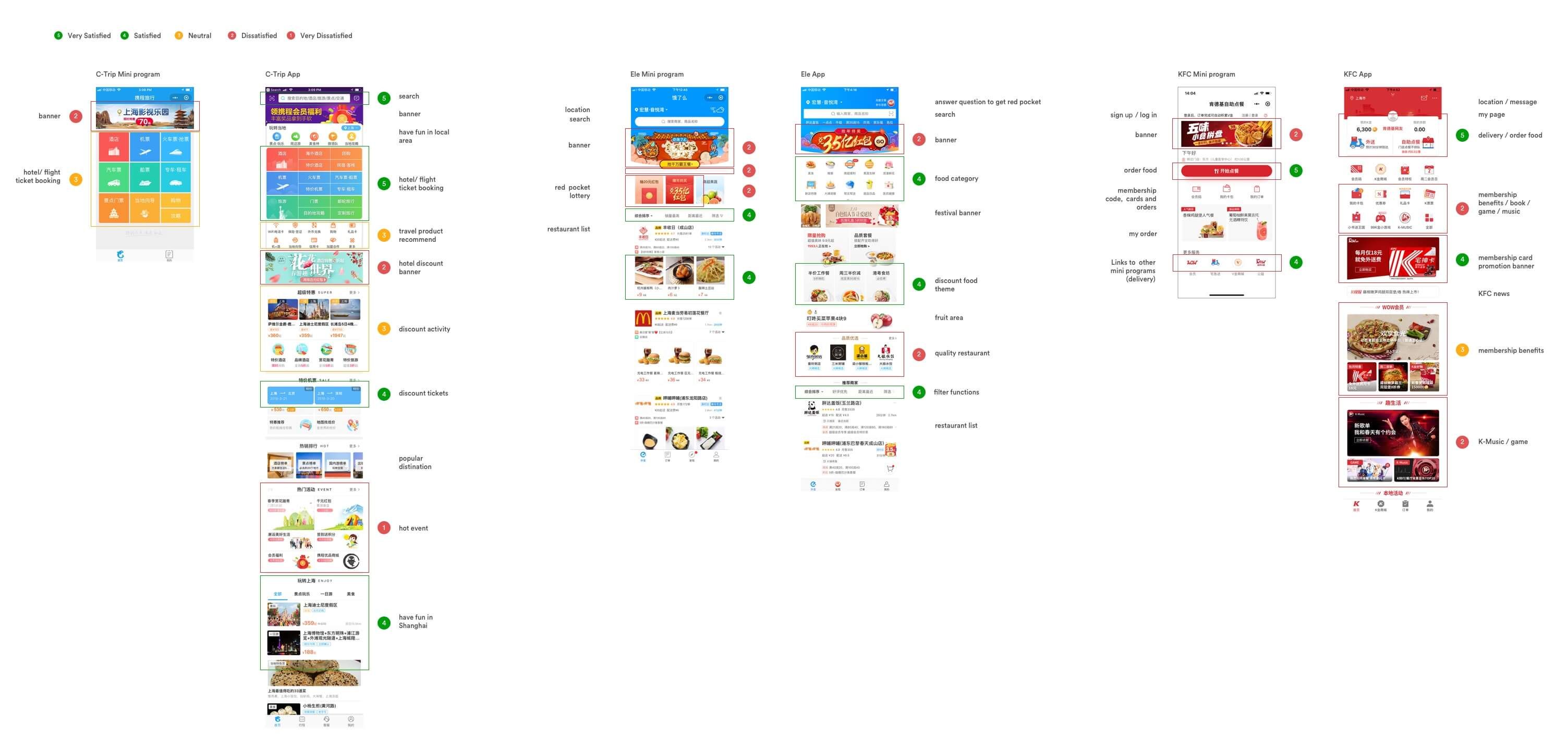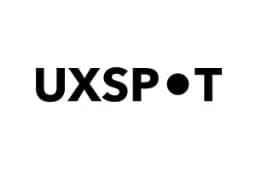The popularity of WeChat mini programs exploded in 2017, shrugging off any doubts they were going to be a short-lived fad. Come 2018, brands and tech giants are scrambling to ramp up their mini program presence as a cost-effective way for users to easily access content, services and products to cater to hundreds of millions of active mini program users. These web-based mini programs, limited to a couple of MB in size and loaded dynamically inside the WeChat app are shaking up the way brands and companies are trying to reach their customers in China. But it seems some don’t understand why and when users like to use them, especially when compared to native mobile apps (iOS/Android). We wanted to explore these questions the best way we know how. With qualitative user research. So we ran a series of focus group interviews at our user research facility in Shanghai, gathering insights through interactive exercises, comparisons, card sorting and deep-dive discussions. This information we present in this article assumes some understanding of WeChat in the context of the China digital landscape and focuses on service mini programs, not in mini games (that's another bag of fish).
Convenience and efficiency in daily life are leading motivating factors in usage
Having faster and clearer access to information is top of mind in Chinese consumers. These patterns of behaviour become evident when we take a glance at the way they live their lives online. We started by looking at why users like to use Wechat mini programs. Through keyword association exercises with the participants, we were quickly able to see patterns emerge painting a picture of convenience. Diving deeper into these keywords we uncovered some further interesting insights.
Convenient
Useful, effortless convenience.
“I can order in advance, I don’t need to wait in line at the cashier” - KFC mini program
Efficient
Simple, often single-task functions.
“My aim is very clear. I just want to buy a movie ticket. It won’t have much afterthought.” - Maoyan mini program
Daily needs
Supports participants daily activities and tasks.
Saves memory
Saves time and memory on their mobile use. Particularly for infrequently performed tasks.
Easier
Accessing mini programs from one of the many (60+) entry points within WeChat is easier.
Payment
Avoids jumping back and forth from app to WeChat to make payments.
“If I’m in an app (native) I need to select payment method, select WeChat, jump to WeChat app and pay, then go back to the app. So a mini program is more convenient”
Sharing
Easy to share information, promotions etc. with friends.
Mini programs should be very easy to use, with a clear interface and fast loading times
Using card sorting exercises we looked at what are some of the most important parts of the user experience when using a WeChat mini program. We gave users a stack of cards and asked them to sort them in the order of most importance. Let’s take a look at the results.
to use
interface
speed
navigation
functions
advertising
WeChat mini programs are convenient, but not for all scenarios
To generate ideas of scenarios when participants find WeChat mini program’s convenient, we used interactive mind-mapping exercises to tap into the creative side of the group's brains, stimulating thoughts and feelings. This isn’t a be-all-end-all list of possible scenarios but it does present an interesting visualization of when it’s perceived to be convenient to use a mini program.
It's interesting to see that many of these scenarios are situational and location-based. Single-task functions that take a previously offline and manually performed interaction one might encounter throughout the day, and making it more efficient by leveraging the strengths of WeChat. Quick access and payments.
Omnichannel shouldn’t mean replicating your app as a mini program
With the rise of mini programs, we noticed a lot of popular apps were recreating but trimming down functions and features on WeChat due to the limited size limit. But are users happy to use a simplified mini program version of their favourite apps? What omnichannel strategy should apps take when launching on WeChat?

Information architecture ranking exercises and discussions
We compared popular apps in China C-trip, Ele.me and KFC with their WeChat mini program counterparts with participants, ranking information architecture and exploring opinions to see which users preferred to use and why.
Hotel, flight and train booking platform.CTrip
Mini Program
The mini program information architecture was seen as chaotic.
Missing search function at top of the landing page.
Disliked promotional banner at top of the page.
If they have already decided on a travel destination, they might be more open to using the mini program to book train/plane tickets or a hotel.
Overly simplified.
Native app
The native app is better organized with core functions divided into 3 sections; hotel, ticket booking, tourism.
Preferred the visual style of the booking section in the app.
Liked travel recommendations and discounted tickets sections on the app.
Disliked event promotions.
Preferred when making larger decisions and payments.
Using the C-trip native app was mostly preferred due to more options, clearer information architecture and the ability to search, explore and read options easier.
C-trip simplified the mini program to the point that it was missing key functions users had become accustomed to.
“I prefer the native app, as I can see the customer service icon which makes it feel more reliable.”
“The app has a notification function, which I think is useful when I want to book a trip”
Restaurant and food delivery service.Ele.me
Mini Program
Missing the food categories section which is seen as an important way to browse.
Red packet lottery which is placed at the top of the page is not seen an important function.
Native app
Participants feel there are more choices in the app.
Filtering/sorting functions improve the usability to find suitable food.
Using the Ele.me native app was preferred due to more in-depth functions and previously formed strong habits.
Ele.me seems to have duplicated their native app as much as possible but without core functions that users had become accustomed to.
“I will always open Ele.me (native app) because for me it's necessary to have the full functions”
“The mini program is missing the most significant section, food categories. So I would choose the native app.”
Self-service order and home delivery. (we tested the self-service mini program against the full-featured app)KFC
Mini Program
(self-service)
Participants were impressed by how simple, clear and straightforward the mini program was.
The banner on the top of the page is disliked.
Links into another mini program for food delivery.
Native app
(self-service & home delivery)
Irrelevant/distracting membership, coupons, and games content.
Disliked the K-Music & games promotions.
Using the KFC mini program was preferred because it has the required functions to execute tasks and is easier to use.
“I would definitely use the mini program because the only purpose for me is to order food quickly. The native app is too complex.”
KFC succeeded in creating a mini program experience that has a better user experience than their mobile app. They do this by working with the limitations of WeChat and breaking up the apps core functions into two mini programs. One for self-service ordering in-store (which we tested) and another for home delivery.
From looking at these comparisons, we can draw some conclusions when it comes to omnichannel strategies of apps launching mini programs.
The needs of users don’t change, but behaviours do. The way users engage with mini programs and native apps are not the same. Participants showed they had predefined expectations for certain digital experiences depending on their complexities.
WeChat mini programs have an advantage when the functions are simple, easy to use and they make life's daily tasks more convenient. They should be fast to load, straight-forward and not take too much of the users time.
Native mobile apps are still preferred when users need more time to read, explore options, make decisions and use more complex functions.
“If I don’t need more functions, I think it’s more convenient to use a mini app… I don’t need to waste time downloading (native) apps”
Recap
To recap our study, here are some key takeaways that can help you formulate your strategy when deciding if you need and/or designing a WeChat mini program for your business. If you’re looking to do further research or design and build your own WeChat mini program in China and user engagement, conversions and customer loyalty are important. Contact us and start a discussion, we can help you win in China.Mini programs should
Mini programs should not

